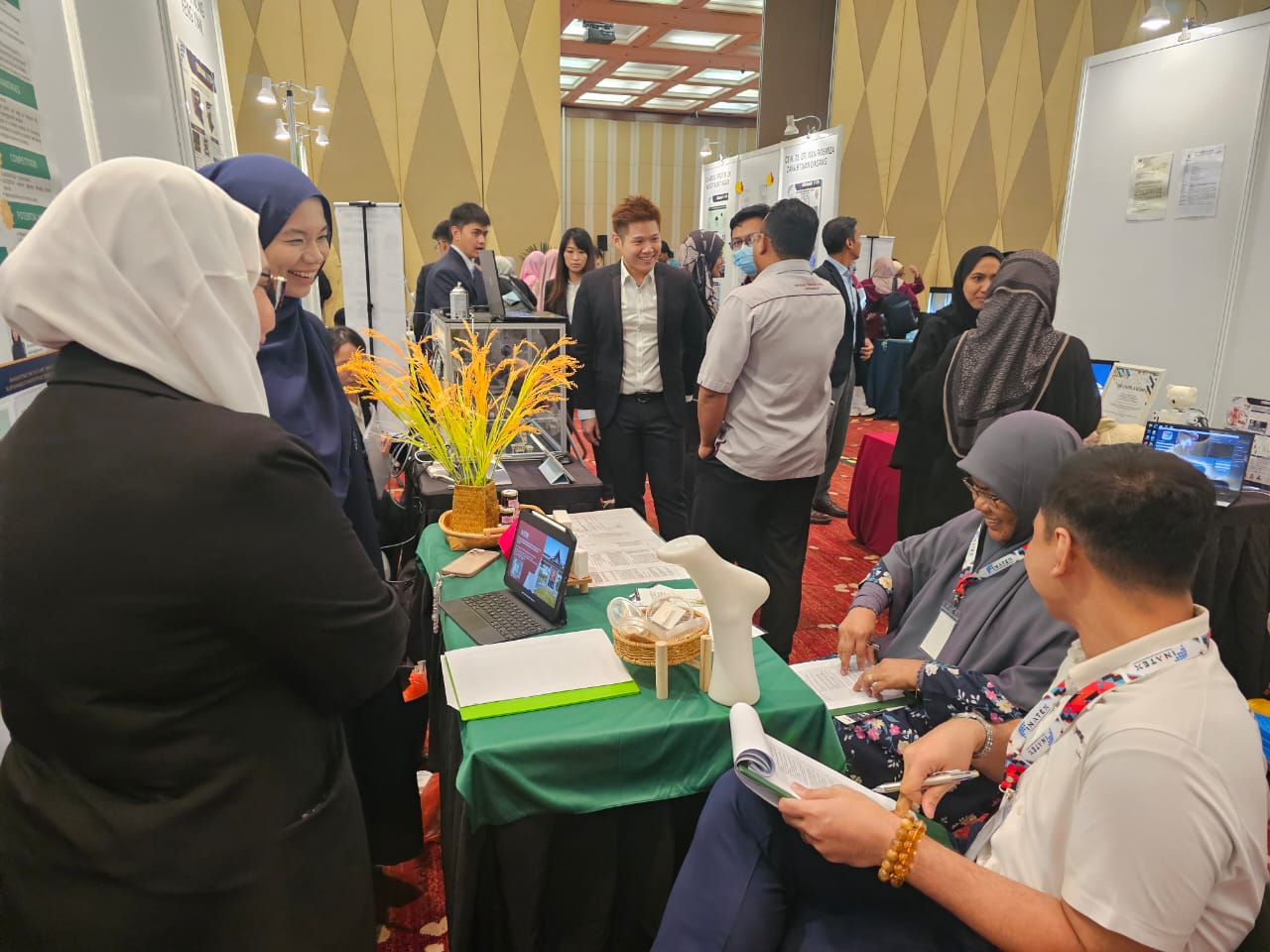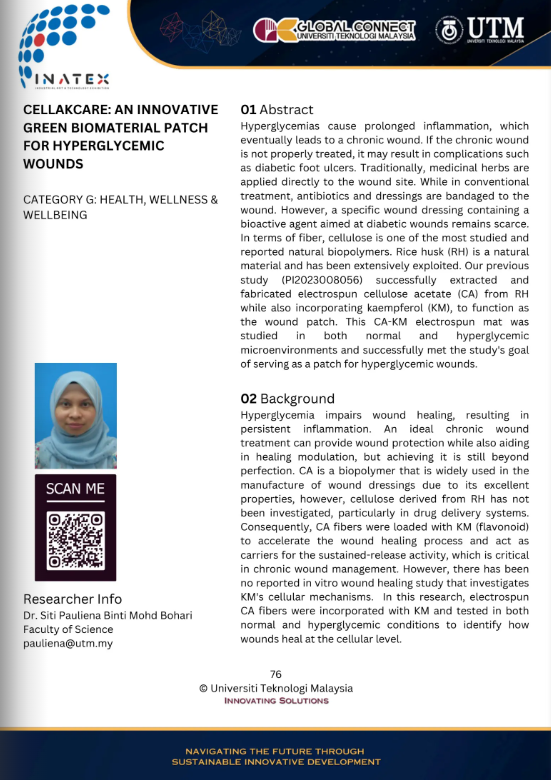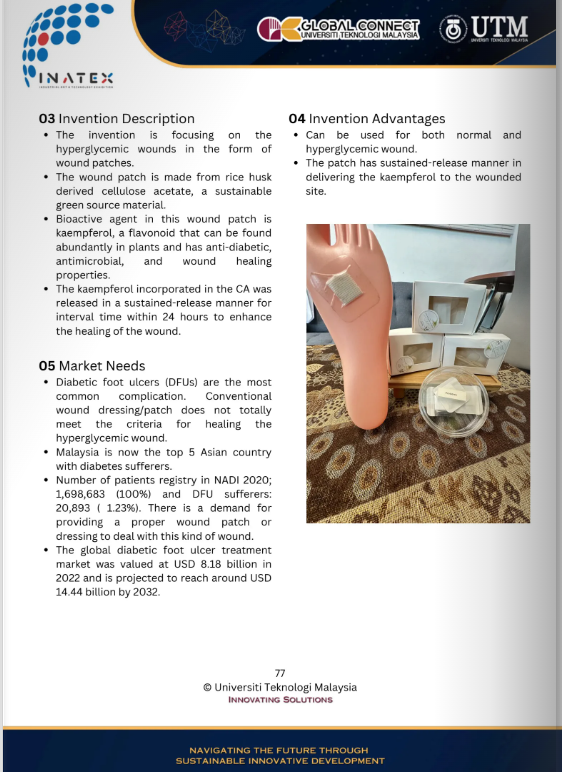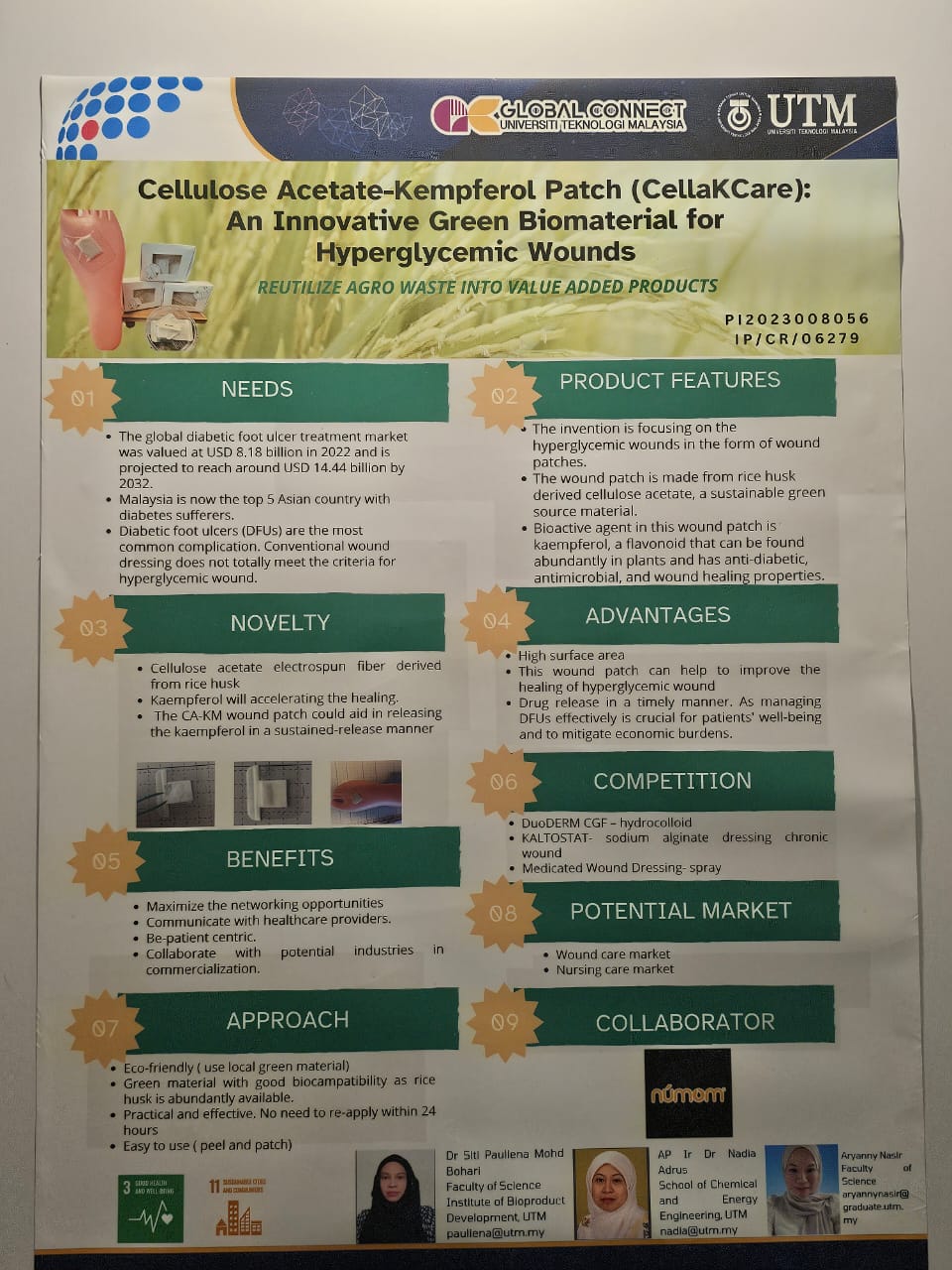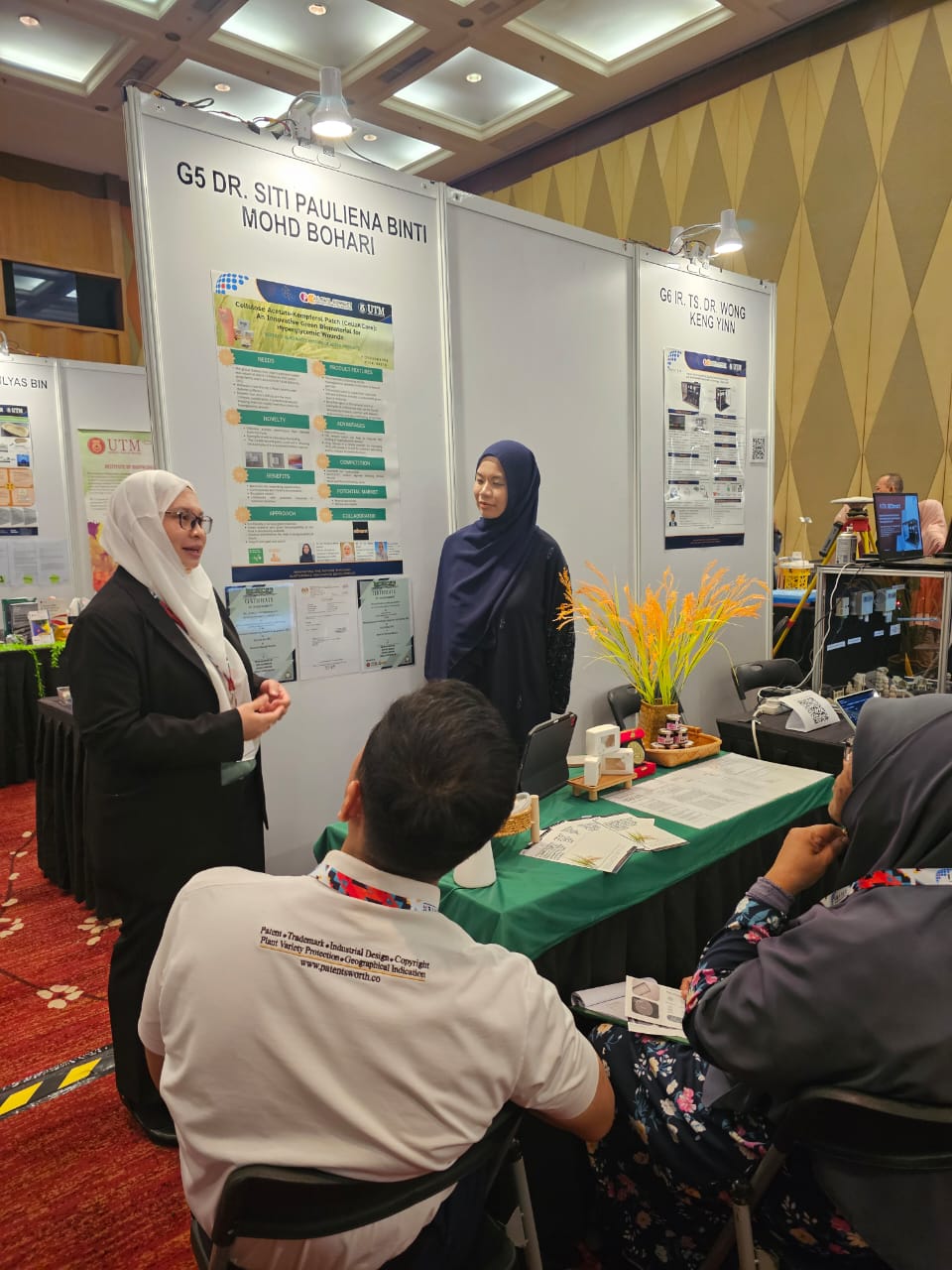Universiti Teknologi Malaysia (UTM) has introduced a groundbreaking solution for treating hyperglycemic wounds, particularly targeting diabetic foot ulcers (DFUs). The research team has developed the Cellulose Acetate-Kaempferol Patch (CeLLaKCare), a cutting-edge wound dressing derived from sustainable agro-waste, specifically rice husk. This innovation aims to address the increasing burden of diabetes-related complications, as Malaysia ranks among the top five countries in Asia for diabetes prevalence.
Key Features and Benefits
The CeLLaKCare patch incorporates cellulose acetate, a fiber extracted from rice husk, and kaempferol, a bioactive compound known for its anti-diabetic, antimicrobial, and wound-healing properties. This green and eco-friendly approach utilizes an abundant local resource, making it both cost-effective and sustainable. The patch is designed to release kaempferol in a controlled, sustained manner, accelerating the healing process for hyperglycemic wounds.
With an enhanced surface area, the patch ensures effective drug release, addressing the chronic management of DFUs in a timely and efficient way. This is crucial for improving patients’ quality of life and mitigating the economic burdens associated with long-term diabetic complications.
Commercial Potential and Market
The global diabetic foot ulcer treatment market is expected to grow from USD 8.18 billion in 2022 to USD 14.44 billion by 2032. CeLLaKCare has the potential to capture a significant share of this expanding market, particularly within wound care and nursing care sectors. Additionally, the patch offers a viable alternative to existing treatments such as DuoDERM CGF (hydrocolloid) and KALTOSTAT (sodium alginate dressing).
A Collaborative Effort
The development of CeLLaKCare is a result of interdisciplinary collaboration within UTM, involving experts from the Faculty of Science, School of Chemical and Energy Engineering, and Faculty of Biosciences. The project is led by Dr. Siti Paulena Mohd Bohari, supported by AP Ir Dr. Nadia Adrus and Aryanny Nasir, alongside the commercialization efforts coordinated with potential industry partners.
Conclusion
This innovative biomaterial not only holds promise for improving wound healing outcomes in diabetic patients but also aligns with global efforts to reduce waste by repurposing agricultural by-products. CeLLaKCare demonstrates how sustainable innovation can address critical healthcare challenges while contributing to environmental conservation.
